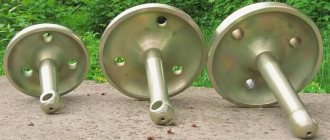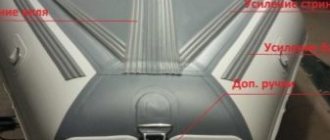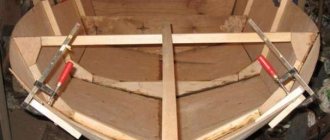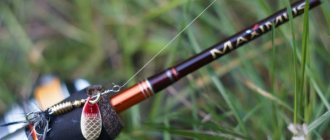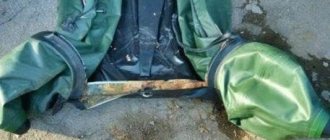An inflatable PVC boat is a practical and affordable watercraft, which is preferred by many modern fishermen. This popularity is due to the fact that this boat, unlike a plastic or metal one, does not take up much storage space and is easy to transport. The inflatable boat easily folds to a compact size and is convenient to transport. But how to fold a PVC boat into a bag correctly? We will tell you briefly and with examples.
General tips for folding PVC boats
- It is more convenient to fold the boat on a flat surface. Find a suitable location outside in the summer or in a heated garage in the winter.
- The boat needs to be laid out, cleaned and dried, after removing the components.
- Once it is dry both outside and inside, you can check it for defects and pump out the air if there is no need for repairs. Use a pump for this or simply gently press the folding parts with your knee. Air will gradually escape from the open valves.
- Before rolling up the boat, it is recommended to sprinkle it with talcum powder to absorb moisture and protect the material from dampness.
- When folding, the already folded part should not warp relative to the part that has not yet been folded. Otherwise, it will simply be inconvenient to put the boat into the bag.
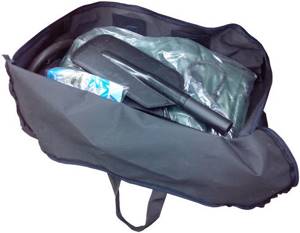
How to fold a boat with floorboards?
Floorboards are removable panels that form the flooring on the bottom of the boat for added rigidity and reliability. The folding instructions are quite simple:
- choose a flat place and unfold the boat;
- remove air from the cylinders;
- remove the payols;
- if there is any remaining air, pump it out using a pump;
- Carefully fold the parts of the vessel first along the keel, then roll them up and secure them with a fixing tie.
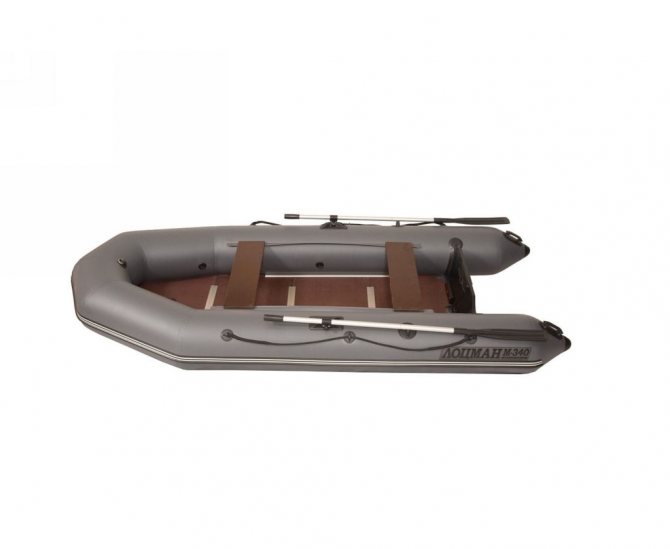
How to fold a boat with a transom?
The transom is the structure on which the motor is fixed. It is located at the back of the boat. To fold this model of watercraft, it is better to ask a friend for help. An extra pair of hands will definitely come in handy. The procedure is as follows:
- it is necessary to release some of the air from the sides and keel, if any;
- at the same time we remove the floor profiles;
- We connect the pump to pump out the rest of the air and begin to roll up the cylinders from the transom side. Direction: in half and lengthwise;
- you need to tuck the inflatable sides under the transom and, in a half-bent form, set them in the direction of the bow so that there is no distortion. Now you can roll it up;
- It is advisable to roll the bow of the boat inward rather than leave it wound on the outside.
If you get a neatly shaped package with no protruding elements, then everything was done correctly. All that remains is to secure the folded boat with a sling and place it in the bag-cover. It will be more convenient to pull it from above and roll the boat from place to place. For floor profiles, a different cover is usually provided; they are stored separately.
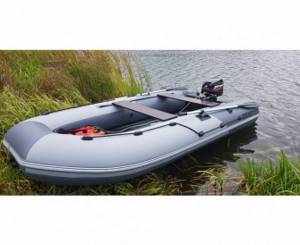
Preparing the boat for folding
Before we tell you how to properly fold a PVC boat, we advise you to find a flat area where you can do this.
Then you need to unfold the boat, opening all the valves to let the air out. To remove all the air, you can use a pump with a reverse air supply function. In principle, the pump does not need to be used. When folding, just press on the folded parts, pressing with your knee, and the air will escape through the open valves. In many videos, by the way, they blow air in this way. Before folding the PVC boat, you need to remove all removable parts. You should also prepare the bag or case that comes with the watercraft, so that after the boat is folded, place it in the bag or case.
How to fold a NDND boat with a keel
We are talking about a PVC boat with a low-pressure inflatable bottom. That is, instead of a hard floor there are inflatable sections (one or several). This can be called both the main advantage and disadvantage of the craft. On the one hand, the boat becomes lighter in weight and easier to transport, on the other hand, you need a high-quality pump, since you will have to quickly pump out the air from all these sections. Otherwise, the procedure will differ minimally from the instructions for folding a boat with a hard bottom. You will find it in the text above.
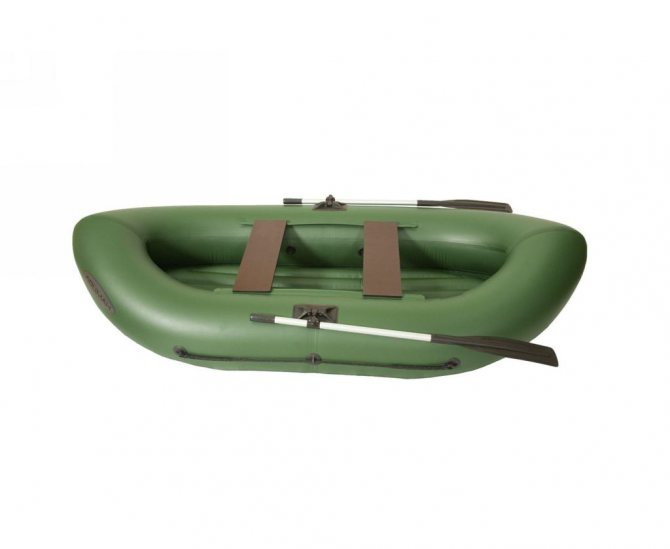
Assembling a boat with a hard bottom
If you have ever unpacked an inflatable boat equipped with a plywood floor, then the dilemma of how to pack it correctly will not bother you.
It takes approximately the same amount of time to assemble a model with a hard bottom. The boat can be equipped with rigid floors, equipped with profiles and stringers. In this case, you will have to reserve a little more time. If you purchased a boat with a hard bottom that folds like a book, the assembly process will be faster. Instructions on how to assemble a PVC inflatable boat with a hard bottom:
- Carefully remove the oars, freeing them from the rotary oarlocks.
- Remove accessories and empty the cockpit of related items.
- Slightly lower the sides of the inflatable flotation device.
- Starting from the stern of the boat, carefully fold the sling-book.
- For a ship with floorboards, disassemble the side stringers.
- Locate the notch on the edge of the aft floorboard. Use it to grab.
- Gently pull the solder part towards you.
- Do the same with the remaining parts of the prefabricated plywood floor.
- Place the collapsible pad in the designated packing bag.
- Use a pump to remove any remaining air from the boat compartments.
- Fold the aft cone sections of the side compartments, pressing them against the transom.
- Bend the sides towards the center of the cockpit.
- Screw the boat from the stern by wrapping PVC material around the transom.
- Pack in a carrying bag.
Important! If you plan to store your boat assembled, wash it thoroughly with a mild detergent and hang the bag from the ceiling. This way you will protect it from rodents.
Video instruction
The video shows how to assemble a PVC boat equipped with a hard bottom. After watching the video, you can perform a similar disassembly of the ship.
How to fold a PVC boat correctly: video instructions
Despite some differences in the design of the boats, the principle of operation when folding them is similar. But, as they say, it is better to see once than to read a hundred times. Therefore, we invite you to watch the video instructions to better understand all the points described above:
An inflatable PVC boat is a comfortable watercraft with a whole list of advantages. In order for it to serve you as long as it should, it is important to take good care of it. Clean thoroughly after each use and dry, do not leave in direct sunlight. And, of course, fold and store it correctly. Not only the convenience of storing the assembled boat, but also its safety depends on this.
Question answer
Question: What is the best way to pack a PVC boat into a bag?
Name: Matvey
Answer: This must be done on a flat surface. First, the boat is unfolded, cleaned, and dried. The components must be removed before doing this. The boat is deflated, sprinkled with talcum powder and rolled up so that the folded part does not warp relative to the part that has not yet been folded.
Question: How to properly and safely fold a PVC boat with a transom?
Name: Ivan
Answer: First you need to release some of the air. The remaining air is released by the pump, and at the same time the cylinders are rolled up from the transom side in the direction: in half and lengthwise. Next, the sides are tucked under the transom. In a half-bent form, they are given the direction towards the nose to avoid distortion. Now comes the folding process: it is better to fold the nose inward.
Question: How can I roll up a PVC inflatable boat with payols?
Name: Matvey
Answer: The boat is unfolded, air is removed from the cylinders, and the floor covers are removed. Next, the remaining air is expelled and parts of the boat are carefully rolled up, first along the keel, then rolled up and fixed.
Question: How to correctly and quickly fold a PVC boat with NDND?
Name: Vladimir
Answer: The procedure is usual, but you will need a powerful pump to quickly pump out the air from all sections.
Share link:
How to properly roll and pack a PVC inflatable boat
Andrey Ogarkov
In fact, describing the actions themselves takes much more time than actually assembling and packaging the PVC inflatable boat. The main thing is to adhere to the basic algorithm for assembling a PVC boat: a flat platform, correctly installed parts of the floors, and when installing stringers, ensure that at least two walls are positioned “in line.”
First, a little “theory”. The dimensions of the assembled boat depend on the thickness and elasticity (rigidity) of the PVC boat material, the volume of air in the boat and on the dimensions of the rigid individual parts of the PVC boat - the transom. There is one more parameter - the “correct” stowage of the inflatable boat, which, in fact, will be discussed now. After the valves have been opened and the air has partially escaped from the cylinders, and all the “solid” parts have been removed (except for the transom, of course), the PVC boat must be slightly prepared for “folding”. The theory again: the transom is a non-removable and inflexible part of the PVC boat, so all the dimensions of the rolled up boat will “dance” around the dimensions of the transom. We bend one of the cylinders (approximately in half) so that the bend itself falls on the edge of the transom and runs perpendicular to it. Looking ahead, I will say that the point is that when both sides are folded, the fold lines run parallel to each other and the distance from the bend of one side to the bend of the other is the same as the length of the transom. It is better to bend the cylinder away from the transom, tilting the transom with one hand and “tucking” the fold under it with the other.
Then, also from the transom of the boat, we fold the cylinder to the end. This operation should be accompanied by squeezing out the remaining air from the cylinder. You can, of course, not squeeze it out, but the air makes it difficult to position the balloon correctly. After the cylinder is folded and the air is almost removed, you need to tuck the handles and other protruding parts into the semicircular cutout on the transom.
You also need to lay the end of the cylinder so that it does not protrude beyond the boundaries of the transom. Now we close the valve (provided that an adapter with a crossbar is used with the pump) and pump out the air from the cylinder with the pump.
When the air is completely pumped out, the balloon will no longer be able to “unfold” and you can repeat the same procedures with another balloon.
Then we pump out the air from the bow balloon and keel, having previously placed them as shown in the photo below.
I would like to draw your attention to the fact that it is necessary to straighten, guide and stack the cylinders and their parts before pumping out the air. Even if some “naughty” part does not want to remain in the position in which you “tucked” it, you can simply hold it with your hand in the desired position at the time of pumping, and after the air is completely removed, this part will remain there where you kept it, and it won’t come out. We check that the valve covers are closed and begin to roll up the boat.
In this case, you need to pay attention to ensure that the folded part does not warp in relation to the sides that have not yet been folded. Another way to put it is this: you need to maintain a perpendicular to the longitudinal axis of the boat. It is convenient to navigate by the rubber strip (keel reinforcement) glued to the bottom of the PVC boat in the bottom center, aligning the position of this strip with the keel.
The bow part does not need to be “wound up” like the whole boat, otherwise the dimensions of the rolled up PVC boat will increase in height; it is better to lay it inside, as shown in the photo below.
Moreover, the fold must be made so that its edges coincide with the fold edges of the rest of the boat, and then press down the bent bow of the main boat.
Next, we tighten the boat with slings with a lock, which can be bought in the automotive or construction department of the supermarket.
Using two slings you need to pull it from the edges, visually identifying the most protruding place. Then the rolled up PVC boat turns out to be as compact as possible.
All that remains is to pack the rolled up PVC boat into a transport bag, and the boat is assembled. But there is one more little trick, I would even say, advice. In order not to once again carry the boat back and forth, putting it in a bag, this same bag must be put on top of the rolled up boat. Before this, of course, you need to put the boat on its edge. After putting the bag on, we fasten the “snakes” a little and turn everything over together.
All that remains is to put a first aid kit and a foot pump in the same bag and fasten the “snakes” all the way.
